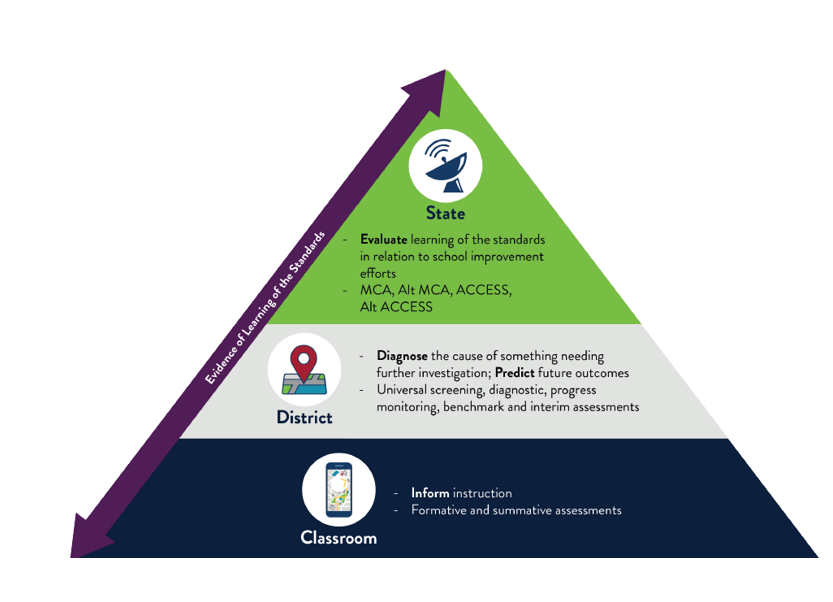Balanced Assessment Systems
Assessment Purpose
Assessments are generally designed to gather evidence for one of the following purposes:
- identify or predict students who may need additional support before the end of the school year;
- summarize individual performance/achievement after a period of learning;
- provide information useful to instruction; or
- evaluate programs/policies.
There is no single assessment that can be used to support all purposes well. Rather, most assessments have an even more specific purpose that fits into one of the four identified above.
Assessment Systems
- The statewide assessments serve an evaluative purpose
- Results are used in the accountability system to ensure all students have access to rigorous, standards-based content across the state.
- Statewide assessments are designed to be used by district and school leaders to evaluate curriculum materials and instructional program alignment to standards.
- This information is broader in scope than the information produced at the classroom level, where the learning takes place.
- Districts administer additional assessments across classrooms or schools to:
- monitor progress,
- allocate resources, and/or
- identify students who are in need of additional support.
- Teachers use assessments at the classroom level to:
- guide instruction and
- communicate learning with students and families.
Together, information from each level is coherently linked by the learning expectations defined in the academic standards.
A cohesive system of assessments has clear purpose, guides instruction and curriculum, produces useful data for monitoring student learning, and continuously informs decision making.
- Assessments should be thoughtfully and strategically selected to support a range of decisions in classrooms, schools, and districts.
- A random and disconnected collection of assessments with no guiding purpose promotes incoherence, inefficiency, and over-testing.
- Assessments should work together in a cohesive system that produces data documenting student achievement towards meaningful learning targets.
This criteria for balanced assessment systems along with the types of assessments described are outlined in the infographics linked below.


